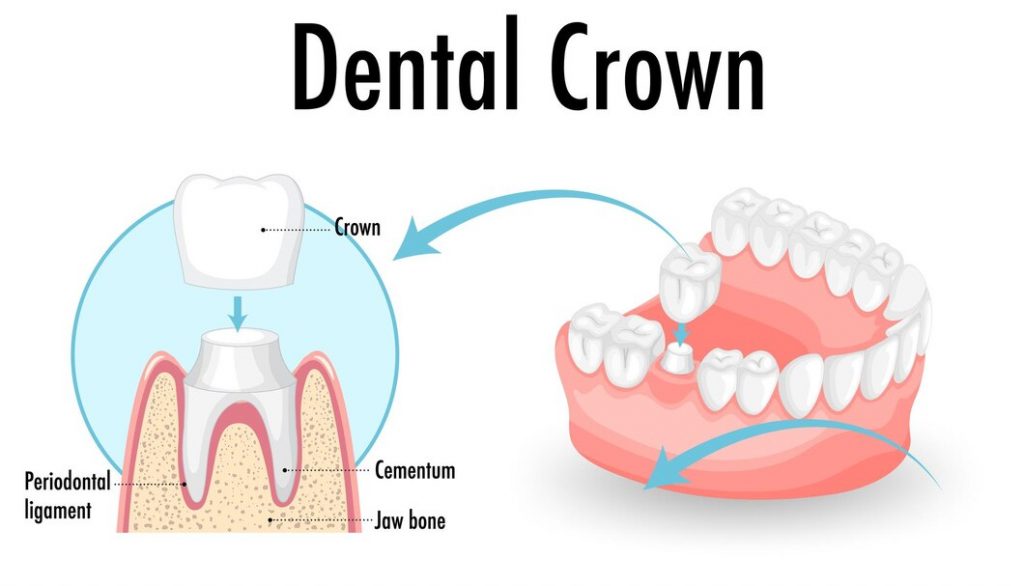Best Dental Crown & Bridge

Procedures

Tooth Preparation
We numbed the area and trimmed down the damaged tooth to make space for the crown fitting.

Impression Taking
We used CAD-CAM scanner to take impression of your prepared tooth and bite alignment.

Crown Fabrication
Our dental lab technicians designed and precision-crafted a custom crown made of ceramic or zirconia.

Crown Placemen
We cemented the ready crown onto the prepared tooth, ensuring proper contour, bite, and aesthetic.

Adjustments as Needed
We made minor adjustments to shape or bite as necessary, for optimal conform and full functioning.

Care Instructions
We provided post-placement oral hygiene and food consumption instructions and follow-ups .
FAQs
Ceramic and porcelain crowns come with varying degree of strengths and aesthetics. Ceramic crowns contain glass or quartz materials, while porcelain crowns are made of feldspathic porcelain with quartz and kaolin.
Porcelain generally offers higher durability, while ceramic options like zirconia offer exceptional strength. Aesthetically, ceramic crowns provide a wider range of shades, while porcelain closely mimics natural tooth shade with customized staining.
Despite porcelain’s higher cost due to specialized fabrication processes, both offer pleasing aesthetics. However, porcelain remains the gold standard for optimal strength, customized aesthetics, and function in dental crowns, guided by our experienced dentists for the best choice.Top of Form
Zirconia crowns are a type of ceramic crown made from zirconium dioxide, renowned for its durability and natural appearance. They are exceptionally durable, biocompatibile, and are suitable for patients with metal allergies.
Metal Free crowns are crowns made from a special material. The materials could be porcelain, resin, or zirconia. While zirconia crowns fall under the metal-free category, other metal-free crowns may not have the same level of strength or aesthetics.
Zirconia crowns are prized for their durability and aesthetic qualities, making them a popular choice for patients seeking a metal-free alternative with superior strength and appearance.
Here is a list of crowns and its ideal usage:
Stainless Steel Crowns:
Best for temporary measures on permanent teeth, especially for children with tooth decay in primary teeth. It is often used for covering and protecting fillings or teeth until a permanent crown can be made.
Porcelain-Fused-to-Metal Crowns:
Ideal for both front and back teeth where aesthetics and durability are essential. The crown provides strength from the metal base and natural appearance from the porcelain.
Tooth-Colored Crowns:
Suitable for individuals seeking both medical and cosmetic enhancement. Used to restore damaged or worn teeth while blending seamlessly with natural teeth.
Metal Crowns:
Recommended for individuals seeking maximum durability and longevity. They are Ideal for back teeth where chewing forces are higher and aesthetics are less critical.
All-Ceramic Crowns:
Perfect for individuals desiring a natural appearance without metal components. They are used for both front and back teeth, offering excellent color matching with natural teeth.
All-Resin Crowns:
Generally less durable and more prone to wear compared to other types. Then are an Cost-effective option, but may not be suitable for long-term use or high-pressure areas.

